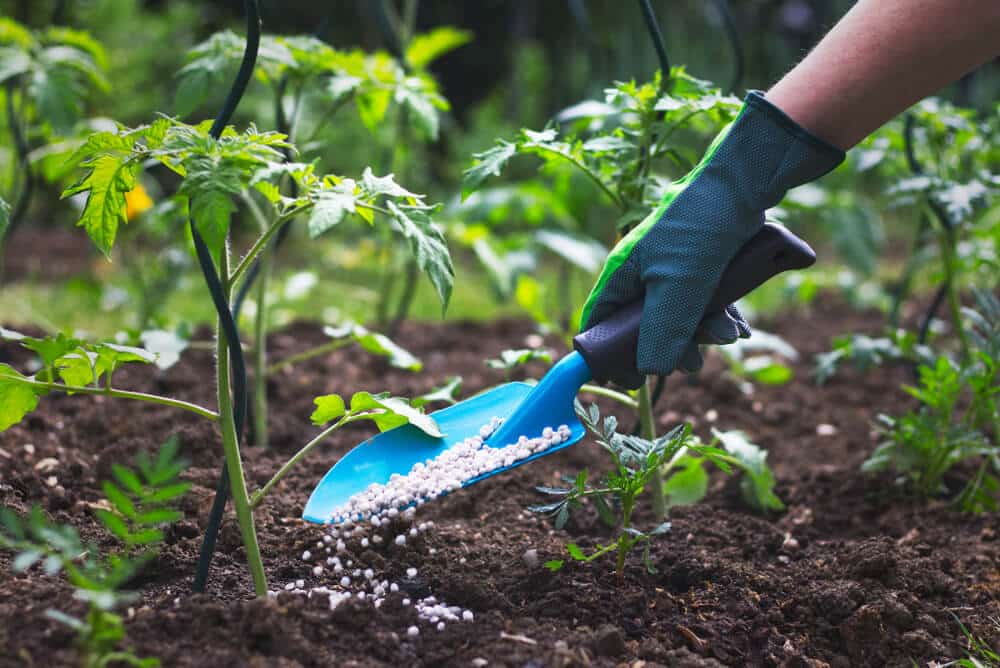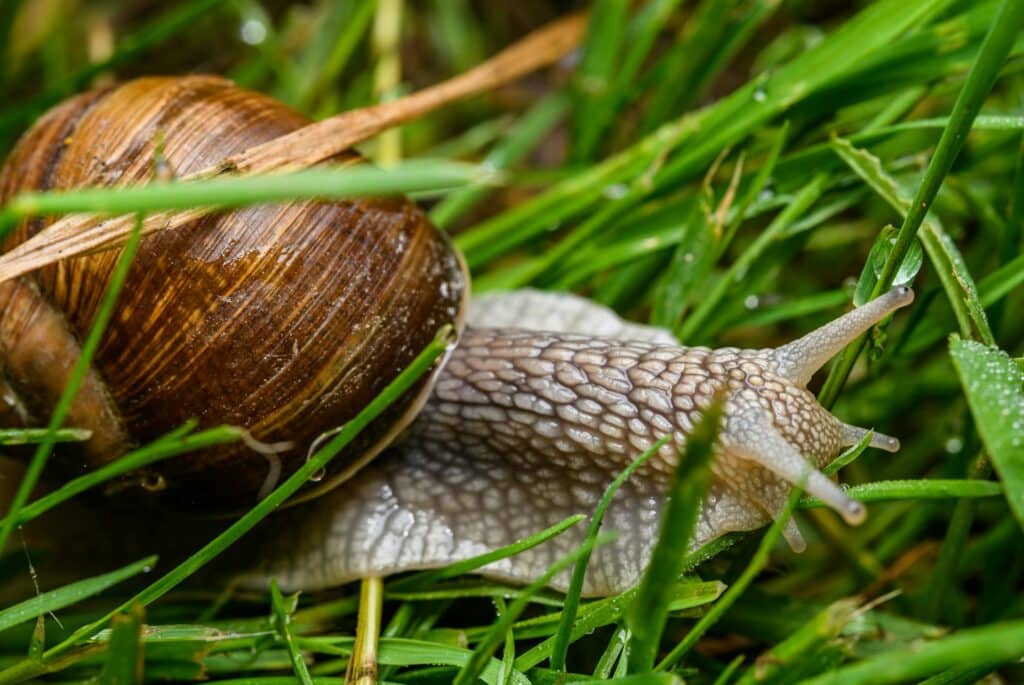Log in or create new account to save this product to your wishlist.

Preparing your Vegetable Garden for Spring
Prepare your vegetable garden for spring: Start early for a successful harvest! Discover practical tips and steps to get your garden ready.
🌱 All important maintenance moments for your lawn during the year. Leave your email and we will send you the lawn calendar for free.
Enter your email
Receive the lawn calendar in the mail
Enjoy a green lawn all year round!
Spring brings a sense of anticipation and joy for gardening enthusiasts, particularly those nurturing a vegetable garden. It’s the time when we can begin to reap the rewards of our efforts and enjoy an abundance of fresh vegetables and herbs. Before you can enjoy a bountiful harvest, however, you need to prepare your vegetable garden for the upcoming season. We’ll guide you through the steps to prepare your vegetable garden for spring, ensuring you can relish the delights of homegrown produce to their fullest extent!
When to prepare your vegetable garden for spring?
When to prepare your vegetable garden depends on your location and the climate in which you garden. Generally, it’s best to start preparing your vegetable garden as soon as the frost has passed and the soil begins to thaw. This typically happens around early March to late April, depending on where you live. By starting preparation at the right time, you give your plants ample time to grow.
Assessing and improving your soil
The quality of the soil is essential for a successful vegetable garden. Before you begin planting your vegetables, it’s important to assess the quality of the soil in your vegetable garden.
Start by checking the pH level of the soil. Most vegetables thrive in slightly acidic to neutral soil with a pH level of around 6 to 7. If your soil is too acidic, you can balance it by adding lime.

- Enriches the soil composition
- Promotes nutrient uptake
- Not harmful to children or pets
On the other hand, if your soil is too alkaline, you’ll need to make it more acidic. You can do this by adding organic material such as compost to achieve a proper pH level. In addition to pH level, you can also improve your soil by working on its texture and structure. Good vegetable garden soil should be well-draining, allowing excess water to easily drain away and preventing your plant roots from becoming waterlogged. If your soil is too sandy, you can add organic material such as compost to improve its moisture retention.

Cleaning your vegetable garden beds
Before you start planting new crops, it’s important to clear and clean your vegetable garden beds. Begin by removing any leftover plant debris from the previous season. These remnants can attract diseases and pests, so it’s important to remove and dispose of them properly.
After clearing the beds, it’s time to clean them up. Remove any leaves, branches, and other debris from the beds. Use a rake to loosen the top layer of soil and break up any clumps. This will help improve drainage and air circulation in the soil.
The importance of fertilising your vegetable garden in spring

In addition to thoroughly assessing and improving the soil and cleaning up your vegetable garden beds, fertilising is also important. In fact, it’s an indispensable step in preparing your vegetable garden for spring. Proper fertilisation provides your plants with the necessary nutrients to grow vigorously and produce a bountiful harvest. Especially in spring, when the growth of your crops accelerates, it’s essential to enrich the soil with the right nutrients to give the plants a solid start.
Pruning your plants to prepare your vegetable garden
After winter, many of your existing plants may need some tender loving care. Preparing your garden in spring also involves expertly pruning your plants. This will help promote healthy growth and flowering throughout the season. Start by removing any dead or damaged branches. Trim them back to just above a healthy bud or side shoot. This will stimulate growth and give the plant a fresh start.

In addition to removing dead branches, you can also prune away excess growth to maintain the shape and structure of your plants. Remove any overhanging branches that may smother other plants or hinder their growth. By pruning carefully, you can keep your plants healthy and beautiful!
Weed control
Spring is also the time when weeds and pests become active again. Start by removing any weeds that have already sprouted. Pull them out by the roots to ensure they don’t come back. It’s also a good idea to apply a layer of mulch around your crops to suppress weed growth.
Creating a planting schedule
If you want to start a vegetable garden, it’s essential to create a planting schedule. It will help you organize your vegetable garden efficiently and ensure that you plant your crops at the right time. Start by determining the average last frost date in your region. This is the date when the risk of frost is minimal. Based on this date, you can then determine when to sow or plant various crops.
When creating your planting schedule, also consider the growing time of different crops. Some crops, such as leafy greens, can be planted early in spring, while others, such as tomatoes, should be planted later. By following a planting schedule, you’ll ensure that your crops grow and can be harvested at the right time.
Tips for preparing acidic soil for your vegetable garden
Some vegetables, such as strawberries and blueberries, thrive best in acidic soil. If your soil is naturally alkaline, you can make it more acidic to meet the needs of these crops. One way to do this is by adding organic material with a low pH to your soil, such as peat moss.
Another way to increase the acidity of your soil is by adding sulphur. You can purchase sulphur in the form of granules or powder and apply it according to the instructions on the packaging. It’s important to be cautious when using sulphur, as an excess of it can be harmful to your plants.
Protecting your vegetable garden from slugs and other pests

Slugs are notorious pests in vegetable gardens and can cause significant damage to your crops. To protect your vegetable garden from slugs, you can use various strategies. One of them is to place slug barriers around your plants. These can be copper strips, for example, which deter slugs by delivering an unpleasant electric shock.
You can also use organic pesticides, such as diatomaceous earth or iron phosphate-based slug pellets. These methods are safe for other animals and can be effective in reducing the slug population in your vegetable garden. It’s also a good idea to regularly check your vegetable garden for signs of slugs. If you find any, you can remove them manually as needed.
To prevent pests in general, you can also introduce beneficial insects into your vegetable garden, such as ladybugs and parasitic wasps. You can also use natural insecticides, such as neem oil, to repel pests. It’s important to regularly check your crops for signs of pests and treat them immediately if necessary.
Enjoy an abundant vegetable garden in spring
Preparing your vegetable garden for spring is an important step to ensure that your crops are healthy and productive. By assessing and improving the soil, cleaning up and pruning your garden beds, controlling weeds and pests, and following a planting schedule, you can ensure that your vegetable garden is ready for the upcoming season. With the right care and attention, you’ll be able to enjoy a bountiful harvest of fresh vegetables and herbs in spring.
So get started and prepare your vegetable garden for a successful growing season!
Happy gardening!
-
Zero-Waste Gardening – This is How You Do It!Did you know that the average person wastes between 100 and 150 kilos of food every year? That's why the concept of zero-waste gardening is becoming increasingly important for environmentally conscious gardeners that like to do their gardening greener.Read more
-
How to Master Tree Pollarding: A Practical GuidePretty dense! What might be an insult to some, is certainly a compliment to trees. Through pollarding, you can make sure, your trees have a dense crown of beautiful leaves.Read more
-
Get Ready: Here are 5 Garden Trends for 2025Curious about the latest garden trends for 2025? From smart solutions to sustainable choices, discover all the outdoor trends that are transforming British gardens!Read more
-
How to Care for Plants in Winter: A Simple GuideWhen winter comes around, the care requirements of your plants change. Find out, how to adjust the care routine for your plants.Read more
-
Companion Planting Made Easy: A Step-by-Step TutorialStrategic plant partnerships can solve common gardening problems like pest invasion and disappointing yields. Find out which plants are great together in our companion planting guide.Read more
-
How to Grow Sweet Potatoes in Your GardenWant to know something splendid? A single sweet potato plant can produce 5 to 10 pounds (4.54 kg) of nutritious tubers—plenty to keep your family’s pantry well-stocked for weeks!Read more
-
Revive Your Lawn After Winter With These Easy StepsTired of winter lawn damage? Discover how to repair brown spots, remove weeds, and revitalise your grass for a thriving garden this spring.Read more
-
A Complete Guide On Lighting for Your House PlantsAchieve perfect lighting for houseplants! This guide covers light mapping, plant placement, and grow light tips to help your plants flourish indoors.Read more
Leave a comment
Your answer will be displayed on the site and the interested party will be notified by email.
Leave a comment
Have a question or want to share your experience? Leave us a comment.

- Order by 2PM = shipped today
- 250.000+ satisfied customers!
- 60 day satisfaction guarantee

- Order by 2PM = shipped today
- 250.000+ satisfied customers!
- 60 day satisfaction guarantee

🌱 All important maintenance moments for your lawn during the year. Leave your email and we will send you the lawn calendar for free.
Enter your email
Receive the lawn calendar in the mail
Enjoy a green lawn all year round!





















Comments (0)
There are no comments yet. Well then, what are you waiting for to
Be the first to write your comment!inaugurate this pretty page?
Do you have some comments?